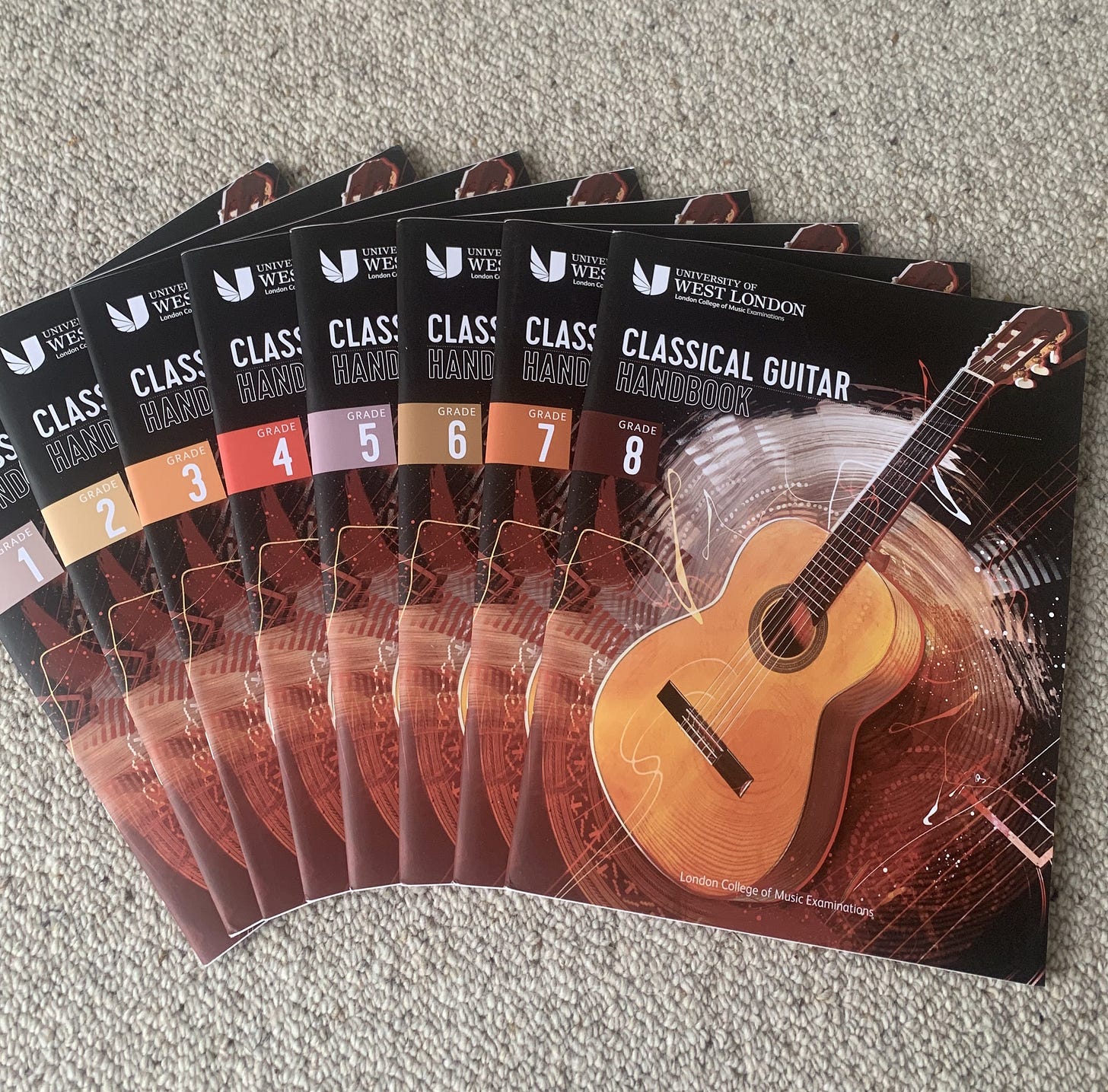Introduction
There’s a goal I’ve carried quietly for years—one I never fully let go of, even when life got busy and my guitar was left to gather dust. That goal? Completing my classical guitar grades.
As a younger player, I dabbled in classical guitar. I loved the sound, the structure, the repertoire. And having watched my peers progress through their studies on their chosen instruments, it was something I always aspired to do. But the means simply weren’t there. During high school, I couldn’t afford formal training, nor the exam fees, so I toiled away on my own—learning whatever I could from any source I could get my hands on.
Like many aspiring musicians, though, life eventually took me in other directions. University, work, playing in bands, and teaching began to take centre stage. And while each of those paths was rewarding in its own way, my classical guitar studies became a kind of unfinished business. Always there, quietly waiting, but never quite getting its moment.
Now, with a bit more space in my schedule and a clearer sense of purpose, I’ve decided to finally pursue it. Not for accolades. Not even for the certificate on the wall (though I won’t say no to that). But for the satisfaction of seeing something through—for giving my younger self a nod and saying, we got there.
Choosing the Exam Path
After comparing various syllabi—ABRSM, Trinity, and LCME—I decided to examine with the London College of Music. While the other programs have their strengths, I felt LCM offered a more pragmatic and musically balanced route. But what really sealed the deal was the option to submit my performances digitally.
When the only exam centre is across the Cook Strait, that flexibility just makes practical sense. Being able to record and submit when I feel ready removes a lot of logistical pressure. In the end, it felt like a no-brainer.
Of course, I’m aware of what I’m giving up by not sitting the exam in person—things like aural tests, sight reading under pressure, and the immediacy of a live performance. But for where I’m at right now, this path feels right.
A Personal Journey
In part, this decision is about achieving an unrealised goal.
As a teacher, I’ve always felt a small pang of guilt for not having completed the practical grades myself. It’s not about legitimacy—I know plenty of excellent musicians and teachers without formal credentials. But for me, there’s always been a quiet voice in the background saying, you should complete your grades.
It’s something I want for myself—to grow, to stretch, to deepen my musical fluency. And to become a better guitarist. One that is more fluent, more focused, and more connected to the music I’ve always loved. But it’s also a gift to my younger self. I want give that ambitious kid the chance to give it a crack, and prove to himself that it’s within reach.
What to Expect from This Blog Series
This won’t be an overly technical how-to series—there are already plenty of those. Instead, I’ll be documenting the process: what I’m working on, how I’m approaching practice, what’s helping (and what isn’t), and no doubt more than one post lamenting the trials of tremolo technique.
You’ll find reflections, frustrations, and hopefully a few breakthroughs along the way. Think of it as part practice diary, part personal project log—with a healthy dose of honest thoughts and light commentary.
If that sounds like your cup of tea, I’d love for you to follow along.
Let’s see where this goes.
~R
Thanks for reading—whether you're a guitarist yourself, a teacher, or just curious about how I’m getting on, I’ll be sharing updates every few weeks on Wednesdays. Make sure to subscribe so you don’t miss out!
Thanks for hanging out at String Theory Guitar Studio. It means a lot that you’re here. All the content available here on Substack is free, and always will be, but if you’re feeling generous and want to support the work I do, hit the button below to buy me a coffee.


